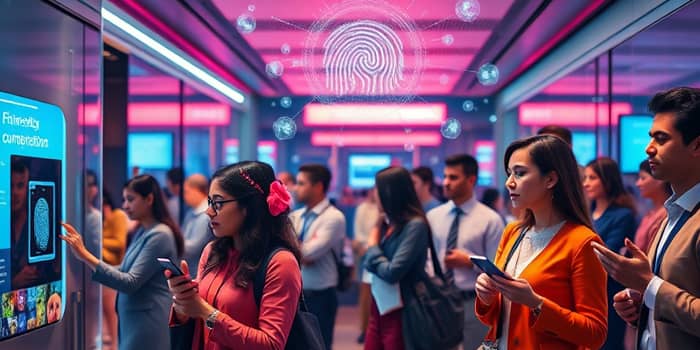
The digital transformation of financial services has ushered in both unprecedented convenience and escalating threats. Traditional passwords and PINs are increasingly vulnerable, leading institutions to explore identity-based methods. Biometric security promises to redefine how we protect assets, verify identities, and deliver seamless customer experiences.
For decades, banks relied on alphanumeric passwords and PIN codes to protect customer accounts. While these measures offered a baseline defense, high-profile breaches and social engineering attacks highlighted critical weaknesses. In response, the industry began seeking more secure, identity-based methods that leverage unique human traits.
Major incidents—such as the 2014 JPMorgan breach affecting 76 million households—underscored the need for robust safeguards. Regulatory scrutiny increased, and banks accelerated innovation to keep fraudsters at bay. This shift set the stage for biometric solutions to move from niche applications to mainstream adoption.
Biometric authentication uses physical or behavioral characteristics to verify identity. These modalities include:
Adoption is diversifying: 44% of users prefer fingerprint scans, 30% opt for eye scans, and facial recognition is on the rise. Financial institutions are exploring multimodal biometric solutions—combining multiple markers—to bolster accuracy and resilience.
Meanwhile, the trend toward passive and continuous authentication analyzes behavior over time, detecting anomalies without interrupting the user experience. Decentralized identity frameworks built on blockchain are also emerging, empowering individuals to control their own credentials.
The global biometric system market is surging. Projections indicate growth from $42.9 billion in 2023 to $82.9 billion by 2027, at a compound annual growth rate (CAGR) of 17.9%. The banking biometric segment alone is expected to reach $9.8 billion by 2028, growing at 19.7% annually.
Financial institutions are responding in kind: 79% are implementing or planning biometric solutions within the next year. By 2028, 65% of all banking transactions worldwide will leverage some form of biometric authentication.
Adopting biometric systems yields measurable gains in security. Banks with comprehensive deployments report a 66% reduction in account takeover incidents and a 43% drop in payment fraud. JPMorgan Chase, for example, saw fraud cases fall by 20% after integrating mobile biometric verification in 2022.
Workforce protection has also improved: 40% of banks now use physical biometrics for staff access, up from 26% five years ago. Reducing credential-based vulnerabilities helps organizations safeguard both customers and employees against unauthorized access.
Despite gains in security, consumer trust remains a critical hurdle. In 2024, only 5% of respondents expressed strong faith in how companies handle biometric data—down from 28% in 2022. Major concerns include:
Regulatory frameworks like the Gramm-Leach-Bliley Act in the U.S. and GDPR in Europe impose strict requirements on data collection, storage, and processing. Nearly 70% of global banks prioritize privacy-first designs, ensuring compliance and fostering consumer confidence.
Beyond security, biometric solutions drive significant cost savings and efficiency. Industry analysts estimate $460 million in potential savings for banks through streamlined onboarding, access management, and know-your-customer (KYC) processes.
Enhanced convenience builds loyalty: customers enjoy faster logins and secure transactions, while institutions maintain robust defense against fraud.
No technology is impervious. Biometric spoofing—using artificial fingerprints or deepfake videos—remains a threat, driving the development of liveness detection and advanced anti-spoofing techniques. Additionally, 85% of individuals worry about AI’s role in compromising biometric systems.
Operationally, banks must scale rapidly, address diverse regulatory requirements, and cater to populations with limited tech access. Ensuring inclusion for elderly or disabled customers is essential to avoid inadvertently excluding vulnerable groups.
The outlook is transformative. Biometric payment transactions could top $1.2 trillion by 2033, growing at a staggering 365% CAGR. Emerging markets in Asia-Pacific and Latin America offer fertile ground, particularly for serving unbanked populations—potentially bringing one billion individuals into formal financial systems by 2025.
Looking ahead, identity-as-a-service platforms and wearable biometric devices promise to make authentication seamless across all digital channels. Integrating AI-driven fraud detection with biometric data will further enhance security, while decentralized finance models could empower users to manage digital assets with full autonomy.
As financial services navigate this landscape, they must balance innovation with responsibility. By prioritizing consumer-centric privacy practices and robust anti-spoofing measures, institutions can harness the transformative potential and nuanced risks of biometrics. Stakeholders—from regulators to technologists—must collaborate to ensure that the future of banking is not only more secure but also more inclusive and trustworthy.
References













